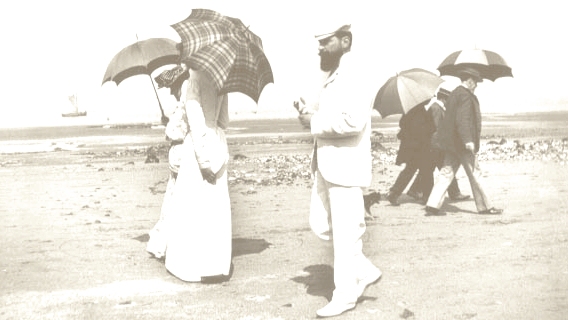Momus Pontifex:from a snippy review of Mariko Mori's Tom Na H-iu at Scai the Bathhouse gallery, Tokyo - at click opera....national governments step in as the big players, splashing their cash around the artworld...
...All I can say is that Mariko is so 90s....
Something children learn earlier and earlier now is the invulnerable shield negativity and rejection confer. Everyone feels vulnerable when something they respond to is derided, because no one knows for sure what's cool, what's going all the way, what matters.
Key to Momus' derision is Mori's father's fortune and how he attained it.
It's impossible for most artworld residents to see past that, the envy and anger it creates. But that's a vulnerable position itself, these are not defensible reactions. So fashion gets drafted, cool, terms of status that indicate value and pertinence.
Fashion has more than surface, the way bird plumage does, the way the sky does, the way the constellations mean something. Fashion is not as trivial as people who don't get it like to imagine. But interpreting the meaning of it is after the fact, parasitic, the critic's place not even in the center of the audience - but off to the side and hanging-on.
Not that criticism isn't part of the larger presence of contemporary art of all kinds, but the power that it wields now, because it's a consumer surrogate, is far out of proportion to its real importance.
There's a fundamental relationship any art has with the shifting center of human productivity, and it's tangential, unnecessary - ultimately too weak to survive on its own. This is the metaphysic of the creative - to transcend that, and prove the essential nature of what they do.
But prove it to who, to what? Critics? Consumers? The mass of food-gathering non-entities who pushed Thomas Kinkade into the history of Western art? Academics?
What is the "artworld" and how solidly is it connected to the commercial?
The question being is there art that's not calling Momus' attention, that's not in the venues he has access to, and is that art at least potentially even more of what he positions ahead of Mori? Further in? Even less "so 90's" in the sense of being even more so something else, something current, or even better, not-yet current, almost-current. Closer to the moment as Momus recognizes it, rising out of the glittering Babel of ambition in what's ultimately a metaphysical conversation - it's why he can use the 90's as a term of derogation, because there's a succession, a movement further into, or toward, something as yet unrealized but recognizable. And the 90's are back there, done.
Really it's like dancing, the rhythm and its possibilities and the way your body can step forward into the present until it's moving right at the edge of what's not yet, the place where the future comes in. Dancers who can't get to that place look awkward.
Momus argues from a position of acknowledgment of that chronology, but he refuses the responsibilities of it, as a custodian of the unfolding, and inevitable - to differentiate the parasitic from the essential, shadow from the substance, reflection from the source, except as fad.
Youth worship and disposable artifacts go hand in hand, they create hunger and desire that gets increasingly shallow and superficial, and consequently more easily filled with aesthetically cheap imitation and empty stimulus. Damien Hirst.
These can end up driving the progress of art, to no good end. Rolling Stone magazine.
That's a big part of what's objectionable in Momus' out-of-hand dismissal of Mori with a calendar term and the ironically-wielded term "sensitive". It's obvious there's a deeper more personal cause for the rejection, but it's invisible in an otherwise clearly written review.
There are nodes of connection that will challenge the critic's allegiance to his social place, and it requires a profound self-knowledge to see past that toward the art itself.



